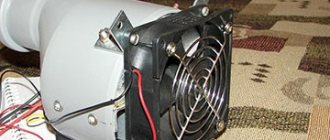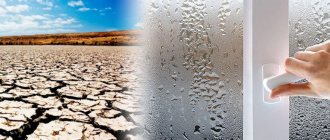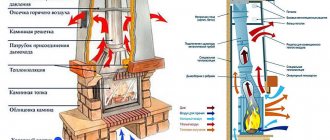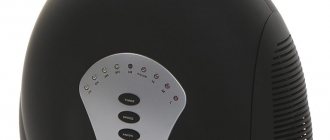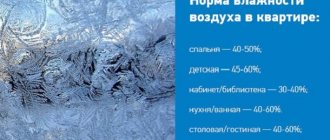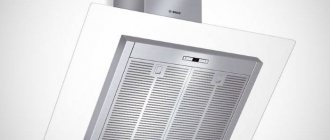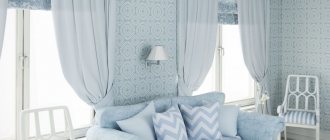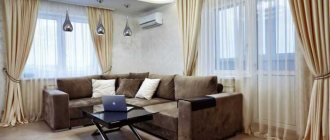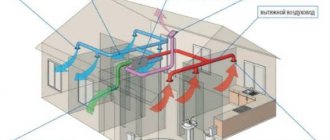To make good purchases at the store, properly manage scraps, or alter old clothes, you need to have some knowledge of fabrics.
If you used fabrics made from natural fibers and fabrics made from chemical fibers for one product, then iron and wash it as necessary for fabrics made from chemical fibers. Be sure to focus on those fabrics that consist of the most sensitive fibers.
The following provides the most necessary information about different types of materials and the most commonly found fabrics on sale.
Fabrics are made up of fibers. Fibers can be natural (plant - from cotton and flax, or animal - wool and silk) and chemical. Chemical fibers, in turn, are divided into two groups: cellulose, chemical fibers - viscose, acetate, triacetate (from cellulose) and synthetic, chemical fibers - polyester, polyamide, polyacrylic, etc. (from petrochemical products).
Determining the composition of the fabric is very important in order to properly handle it during sewing, care, ironing, etc. The most difficult thing to determine is the composition of mixed fabrics.
How to determine fabric type
Below we provide recommendations that do not provide one hundred percent certainty, but will help you approximately determine the composition of the fabrics.
Use tweezers to take a 5cm piece of cloth and hold it over the flame. Once the fabric catches fire, place it in a fireproof container and watch the combustion process. If the fibers of the fabric are vegetable (cotton, linen, viscose), then the shred will burn quickly, with a flame, and you will smell the burnt paper. If the fibers are of animal origin (wool, silk), then the piece will burn slowly, without flame, and you will smell the smell of burnt hair. If the fibers of the fabric are synthetic (polyester, microfiber, etc.), then the shred will melt without a flame and instead of ash, a solid ball will remain. If you want to test whether the fibers are acetate, drop a piece of cloth into the nail polish solution. These fibers must break down.
COTTON
Very durable, comfortable to wear and heat resistant fabric. It is especially hygroscopic, i.e. the fabric absorbs a lot of moisture and does not become wet to the touch. Mercerized cotton is available. This fabric acquires a soft shine. It is the most durable and hygroscopic. Cotton has almost no heat, which means it is an ideal fabric for summer clothing. Brushed cotton is available and is warmer.
Cotton fabrics wrinkle a lot and shrink when washed if they are not treated (that is, not treated in a special way). When sewing with other scraps, be sure to wash and iron the cotton scraps before sewing. Non-colored cotton can be washed at 95°C, colored cotton - at 40°C in a washing machine for white cotton you can use a universal washing powder, for colored cotton - a special one for washing thin fabrics or without brightener.
Drying in the dryer rack of your washing machine may cause severe shrinkage. Finished cotton fabric after washing, without squeezing, should be hung out to dry and then ironed in the “wool” mode. Other cotton fabrics are best ironed while not completely dry.
This is a fabric with a very smooth surface with a matte sheen. Flax gets dirty a little and crumbles when cut. Easily absorbs moisture and dries quickly. It is also an absorbent fabric, so it is ideal for humid, hot weather. This fabric is very durable, and wet linen is even more durable than dry linen.
Linen is harder and stiffer than cotton fabrics. It wrinkles, but not as much as cotton. Flax tolerates boiling well. But dyed fabric needs to be washed at 60°C, finished at 40°C and with a gentle washing cycle. If you wash it in a machine, then linen can be washed with universal washing powder; for unbleached and colored linen it is better to take powder for fine fabrics without bleaches. When dried in a dryer, flax may shrink. Linen is always ironed with moisture and at the highest temperature.
WOOL
Woolen fabrics get dirty a little and hardly wrinkle. Sometimes it is enough to hang woolen clothes on a hanger for wrinkled folds to disappear from them after a while. Odors of sweat, food and smoke quickly disappear from woolen fabrics. The surface of wool fabric repels water droplets, but absorbs moisture in the form of steam. Therefore, the wool dries slowly. Wool fabric retains heat well. It falls off easily, making it even warmer and more windproof. Wash wool only by hand using washing powders for fine or woolen fabrics.
The maximum water temperature during washing is 30°C. Wash the fabric in plenty of water (preferably in the bathroom). Never rub or twist. Finished wool can be machine washed at 30°C on the wool cycle. After removing the woolen product from the water bath, you need to carefully roll it into terry cloth and lay it out horizontally to dry. Under no circumstances should it be dried in a dryer, on radiators or in the sun. You need to iron wool in the “wool” mode with moisture or through a damp cloth.
Silk clothing is pleasant to wear in any weather: it warms in the cold and does not heat up in the heat. Silk fabrics never feel damp to the touch. silk quickly evaporates moisture from the surface of the skin. By the way, sweat can cause stains. Such stains can make the silk brittle. Therefore, at the bottom of the sleeve cap, sew bias tape to the garment with rounded ends as armpits.
Twisted silk is considered the highest quality; it is obtained from long threads from the middle of the cocoon. Buret silk is one of the low-quality types of silk; it is extracted from the fibers of the cocoon shell. Chesucha is silk extracted from the cocoons of the oak silkworm. Depending on the quality, type of weave and finishing of the fabrics, silk can be very light and soft or heavy and stiff.
Silk fabrics wrinkle to varying degrees, again depending on the quality. High-quality silk practically does not wrinkle. Items made from taffeta, silk brocade, silk chiffon, silk organza, silk satin and silk crepe georgette must be dry cleaned. When washed, any silk sheds a lot. Silk is washed only by hand at 30°C with soft washing powder. Silk should not be rubbed, squeezed or twisted. The silk should be rinsed well, first in warm, then in cold water. You can add a little vinegar to the last rinse water, which will refresh the colors of the silk.
Making a condenser dehumidifier from a refrigerator
This method is more complicated, but you can also easily find the necessary components for it. The basis of the design will be an old refrigerator. It must be in working order.
The design of the condenser dryer is based on an old refrigerator.
- Old refrigerator.
- Plexiglas sheets (thickness not less than 3 mm).
- Fan. A power of about 100 W is sufficient.
- Pressure plastic grille.
- Self-tapping screws.
- Screwdriver.
- Screwdriver.
- Cutter or hacksaw for metal.
- The doors are carefully removed from the freezer and refrigerator compartments of the refrigerator. Most models have the ability to remove the doors, so these steps will not be difficult.
- Plexiglas sheets are measured and cut according to the size of the doors.
- A hole is cut at a distance of 35 cm from the edges of the plexiglass plate. It will serve to install the fan. The dimensions of the hole must correspond to the dimensions of the pressure plastic grid.
- The fan and grille are installed. Self-tapping screws are used for fixation. The fan should be positioned in such a way that air is blown through the grille into the refrigerator.
- Holes are drilled in the upper part of the plexiglass. The total area of the holes should be equal to the size occupied by the fan.
- Plexiglas is mounted in place of the doors. Silicone or electrical tape is used for sealing.
After completing the work, all that remains is to turn on the refrigerator and fan. The air will be drawn by the fan into the compartment with the operating compressor. Here the air is dried and discharged through holes in the plexiglass.
When properly installed, such a device can reduce indoor humidity by 10%.
In addition to dehumidification, such a refrigerator device works well to cool the air in the room.
Few people think about the negative impact that increased air humidity has on a person and, in general, on everything around him in the house. It not only contributes to the development of fungus, mold and other unnecessary evil spirits in the premises, which causes illness in humans, but also spoils the apartment as a whole - most modern finishing materials are not intended for use in such an environment. You can combat this state of affairs in different ways - some people often ventilate their premises, others install expensive ventilation, and only a few purchase devices such as a moisture absorber for their home. This is an effective device that will be discussed in this article. In it, together with the website stroisovety.org, we will deal with the question of which moisture absorber to choose for your home?
Fabric with waterproof polyurethane layer
Does not allow moisture to pass through, while allowing the baby's skin to breathe. It is the most common fabric in waterproof reusable diapers.
There are two types of layering: PUL (polyurethane lamination) and TPU (thermoplastic polyurethane). The polyurethane layer in fabrics with TPU is thermally bonded. It is more expensive than PUL, in which various chemicals containing formaldehyde and phthalates, which are hazardous to human health, can be used at the final stage to obtain the waterproof properties of the fabric. Therefore, before purchasing fabrics with a PUL layer, it is always recommended to check the availability of the appropriate certificate confirming the absence of these substances.
Fabric with a polyurethane layer is used to make diapers, waterproof cloth diaper covers, swim briefs, waterproof absorbent liners, and wet bags.
Bamboo
Fast growing unpretentious plant. Bamboo fabric is believed to resist bacterial growth. However, in most cases, chemicals are used to turn the plant into soft fabric (bamboo rayon). Therefore, bamboo viscose can never be labeled as “organic.” Another method of processing bamboo is expensive, but environmentally friendly, when the plant is mechanically treated with enzymes and the so-called bamboo flax is obtained.
For diapers and absorbent pads, the most commonly used material is bamboo viscose with a ribbed or looped design on one side.
Cotton
The most famous and affordable fabric for making reusable diapers. Most often, knitted cotton fabrics with brushing or loops on one side are used due to their softness, stretchability and good moisture absorption.
Organic cotton . Cotton producers are among the most committed users of pesticides to achieve sustainable high yields. Therefore, when sewing reusable diapers, many mothers choose fabrics made from organic cotton. They are made from cotton grown without the use of pesticides or genetically modified substances and processed without chemicals. Must have a certificate.
Useful tips
Take advantage of simple but effective tips from folk craftsmen and specialists:
- When purchasing a dry moisture absorber, be sure to pay attention to the composition of the silica gel, as you can find options on sale that contain chemical compounds. It is impossible to install a structure with toxic substances in an apartment or house, as this can lead to intoxication of the body.
- When sealing joint areas, additionally seal the seams with tape, silicone or self-adhesive tape.
- Remember that the operation of dehumidifiers is based on the supply-pressure action - air masses are first blown in, then blown back out.
- To increase efficiency, it is recommended to install homemade devices in the central part of the apartment.
- Remember to control the humidity level. For the human body, optimal moisture is 40-60%. The dehumidifier must be turned on when the humidity reaches 65-70%, no less. To check the readings in the room, purchase a hydrometer. Today you can find both arrow and digital options on sale.
- Do not allow the air to dry out, as this has a negative effect on the body. Watch this especially carefully in the summer.
- If you have made an absorption type of moisture absorber, dry it or change the absorbent (salt, silica gel) every few days.
- Along with using the unit, be sure to ventilate the room so that oxygen enters. Don’t forget about cleaning the centralized ventilation system and hoods.
If you make a dehumidifier with your own hands, you will significantly save your family budget, since store-bought options are quite expensive. Homemade systems are especially relevant in rooms with high levels of humidity - bathrooms, kitchens, swimming pools, home baths and saunas, cellars and basements, garages and country houses.
Natural raw materials for fabric
To create a comfortable summer wardrobe, not only the type of fabric is important, but also its composition. Natural fibers are considered the most suitable option for hot weather because they almost always absorb moisture well and “breathe”.
- Hemp is almost as ancient a raw material for clothing as silk. In Russia, hemp began to be grown during the reign of Peter the Great, and the resulting material was called hemp. In modern times, a variety of hemp that does not contain narcotic drugs is cultivated to make fabric. Hemp fabrics are very durable, wear-resistant and hypoallergenic. They absorb moisture well, do not accumulate static electricity, and also hardly wrinkle. Hemp is soft and light to the touch and retains color well.
- Linen fabrics were made back in the Neolithic era, also in Ancient Egypt. In modern times, flax is harvested by a combine, the straw is soaked, dried, washed and woven, and then spun into yarn. The fabric is environmentally friendly and conducts heat well. Linen is durable, does not electrify, is breathable and contains silica, which does not allow the development of bacteria and microorganisms.
- Ramie is a plant fiber obtained from Chinese nettle. Even with prolonged contact with water, this fabric does not rot. The material is soft, comfortable, breathable. Summer pants and shorts are made from ramie, and fibers are added to other fabrics.
- Cotton is harvested from the fields using special combines, and there are also small family businesses where the soft fibers are still harvested by hand. Cotton fabrics fit very nicely to the body, “breathe”, absorb moisture, but at the same time they are not at all elastic, wrinkle, dry slowly and do not last long. However, cotton is considered a universal material for hot weather.
- Silk is a protein fiber obtained from the cocoons of silkworms. The technology for making silk thread and fabric was invented in China more than five thousand years ago. Natural silk is a hygroscopic, durable and shape-stable material with a soft shine.
- Wool is obtained from the hair of furry animals (goats, sheep, llamas, camels), which are shorn, and yarn is made from the resulting raw materials. Wool is a very warm and hygroscopic material; only the finest fibers are used for sewing summer fabrics. Wool threads are used, for example, to create lightweight georgette fabric.
Types of summer clothes made from natural fabrics:
- dresses, sundresses, tunics;
- blouses and shirts;
- overalls;
- home clothes (robes, shirts);
- T-shirts, tank tops, tops;
- trousers and shorts;
- headwear (caps, Panama hats);
- shoes (moccasins, sneakers, elements of flip-flops and sandals);
- lightweight beach bags.
Synthetic threads can be found in many modern fabrics. Don’t be scared right away and give up the thing you like. It is synthetic fibers that reduce the cost of the product and also improve its characteristics. For example, cotton fabric with a small addition of synthetics will not wrinkle, and elastic lycra will allow the item to fit perfectly. However, people with sensitive skin and allergy sufferers should avoid synthetic materials.
Moisture absorber for the home: varieties
Today, there are two types of air absorbers, the operation of which is based on several different principles - one of these types requires power supply, and the second is completely energy independent. The first is more efficient (industrial types of air dehumidifiers are made on this operating principle), and the second is less effective - or rather, has lower productivity. In principle, for one room of up to 20 square meters it is quite enough. Let’s take a closer look at these two types of these devices, since the answer to the question of how to choose a desiccant for an apartment or house primarily depends on them?
- Electric moisture absorber for home (condensation). In some ways, its operating principle can be compared to a refrigerator - both devices have an evaporator (cold heat exchanger), a compressor, and even a hot heat exchanger, which in a refrigerator is usually located on the back wall outside. Everything is the same, but the purpose and some details differ - if in the case of a refrigerator the evaporator is necessary in order to remove heat from the products, then in the case of a moisture absorber it is intended to condense water on it, which is abundant in the air. On a cold heat exchanger, the same process occurs that you can observe on windows in winter - we are talking about condensation, which is formed as a result of excess humidity. Subsequently, the condensate formed in the desiccant evaporator flows onto a special tray, from where it is safely discharged either into the sewer or outside the house, as is provided in air conditioners, which, by the way, are designed in the same way as the refrigerator and desiccant. Having passed through the condenser (evaporator), the air pumped by the fan enters the hot heat exchanger, which again heats it to room temperature, after which the air, completely cleared of excess moisture, is returned to the room. By and large, with the help of this technology, moisture can be completely removed from the air - to prevent this from happening, devices of this type are equipped with their own hygrometer, which controls the output air humidity. If necessary, it saturates the air with moisture to the specified parameters - it takes this moisture from the pan, into which it flows in the form of condensation. For an apartment, a water absorber of this type is not used - this principle of air drying is used either in enterprises or in private houses, which have large swimming pools inside.
Moisture absorber for home photo - Absorbent dehumidifiers for the home. This is a household version of a dehumidifier, which is ideal for apartments - its operating principle is based on the phenomenon of absorption. A special tablet, so to speak, binds moisture vapor to the hands and feet and prevents them from escaping from the device. The entire process of removing moisture from the air is carried out without the participation of electrical devices and mechanisms - the purified air (inside the device) is replaced by humidified air, where excess moisture vapor, thanks to the tablet, turns into a saline solution that flows into a small container, which has to be emptied periodically. Yes, this is somewhat slower than in the previous case, but without unnecessary energy expenditure. Such moisture absorber devices cannot be powerful and they are designed for use in one room - one charge of the device (one tablet) is enough to clear the air of excess moisture in a room of up to 20 square meters for two to three months. Next is reloading.
This concerns the operating principle of a device such as a dehumidifier. If you go to a store, you will find that they classify these devices for improving the climate in the house according to a slightly different principle - they will offer you household or industrial desiccant absorbers. In turn, both of them can be mobile or stationary. Naturally, when choosing a device of this type for private use, you should pay attention to household equipment - preferably mobile, which can be moved from room to room. Among other things, when choosing dehumidifiers for your home, you should also pay attention to its performance. For household equipment of this type, it does not exceed 25 liters per day - this value must be selected so that the device does not dry out the air in the room. You simply measure the existing humidity in the room and go to the store with this indicator.
How a water absorber works for an apartment photo
Batiste
Translucent, delicate and thin material made of cotton or linen. The weave of the threads is plain. The canvas can be smooth, as well as with patterns and ornaments. To make cambric, thin twisted yarn is used. The fabric can be plain, patterned, bleached and mercerized (special treatment to prevent fading). The most expensive and high-quality cambric is made from the finest hand-spun linen threads.
- environmental friendliness;
- hypoallergenic;
- ease;
- dimensional stability;
- ease of care;
- the fabric does not fade;
- does not wrinkle.
Nightgowns, blouses and dresses, as well as accessories (gloves and belts) are made from cambric. To maintain the aesthetic appearance of the product for as long as possible, it must be properly cared for. Both hand and machine washable in delicate mode. Wring out the products by hand and dry in the shade. If necessary, cambric is ironed through gauze.
Guipure
Airy lace fabric with ornamental inserts that connect the patterns. Guipure was invented in Italy; in the 16th century it was ordered from Venetian craftsmen. The material is quite hard, but looks elegant. Suitable for decorating dresses and blouses; if there is little mesh and the fabric is almost opaque, it can be used independently.
Guipure is made from silk, cotton, linen, viscose threads, Lurex is added for decoration, lycra and polyester are added for elasticity.
The more lace there is on the guipure fabric, the thicker and stiffer the fabric will be. The material should be protected from tightening and tearing. Despite the external fragility of the fabric, guipure can be washed both by hand and in a machine. Suitable water temperature is 30 degrees, iron temperature when ironing is 150 degrees.
DIY dehumidifier
For those who want to save money, we offer instructions on how to make a condensation moisture absorber from scrap materials. To make it you need to have:
- working old freezer;
- a small piece of organic glass;
- self-tapping screws;
- silicone sealant;
- two fans;
- electric heater;
- rubber tube.
The creation process includes the following steps:
- The door is being dismantled.
- A fan is attached to the bottom of the glass. All joints are treated with sealant.
- Another fan is attached at the top of the glass. It will help remove air.
- They install a tube whose role is to remove moisture.
- Finally, plexiglass is placed in place of the old door, and a container for the condenser is placed below the pipe.
Georgette
Light and delicate, slightly grained fabric made from wool, viscose or silk. Polyester and elastane are also added to the composition. Twisted georgette threads are joined together in a strong plain weave. The texture of the material is quite rigid and retains its shape well, emphasizing the figure.
- hygiene;
- hygroscopicity;
- ease;
- wrinkles a little.
Draped dresses, blouses and skirts are made from georgette. The material is also used as finishing. It is recommended to wash georgette by hand using liquid detergent. Before drying, the product is carefully straightened. Iron georgette only from the inside out, preferably through a damp cloth.
Satin
Smooth fabric with a silky surface. The weave of the threads is satin. Natural silk and cotton are used to make the material. Due to its elegant appearance, satin is often confused with satin, but the weave of these fabrics is different. There is a variety called jacquard satin - a double-sided material with a large woven pattern.
- hygroscopicity and breathability;
- smoothness;
- does not wrinkle;
- pleasant and cool to the touch.
Dresses and blouses are made from satin, and shoes are also covered with this material. To protect the front side of the fabric from puffs, the products are turned inside out. Permissible water temperature is 40-60 degrees. Satin practically does not wrinkle and does not require ironing.
Differences in dehumidifiers depending on performance
The need for air drying arises not only at home. It is needed in production workshops associated with open evaporation of liquids, in places where materials are stored, at construction sites, in museums, exhibition halls and other premises with increased requirements for humidity levels. Depending on the power and functionality, drying equipment is conventionally divided into two large categories.
Appliances
This category includes compact models with a pleasant design and minimal noise. Often such devices have additional useful functions:
- ionization;
- aromatization;
- dust removal.
They are installed in private houses, apartments, offices, educational and medical institutions. At maximum mode, they are capable of condensing several tens of liters of water per day. The tray usually has to be emptied manually.
Household dehumidifier.
Industrial devices
Such units are capable of extracting hundreds of liters of water from the air per day. They are large in size and have a laconic design. They are installed in workshops, warehouses, public baths and swimming pools. There are devices with floor installation or wall-mounted models. Their condensate collection system is usually directly connected to the sewer system.
Industrial dehumidifiers rarely have an aromatization option. For them, the function of accurately maintaining the desired temperature in the room is more important. They are controlled from the remote control on the product body or using a remote control.
Chintz
Lightweight plain weave cotton fabric made only from natural fibers. It can be plain or with a pattern. The variegated, brightly colored fabric was invented centuries ago in India. Typically, chintz is made from calico, an untreated plain weave cotton.
- environmental friendliness;
- color fastness;
- ease of care and safety;
- breathability;
- hygroscopicity;
- affordable price.
Men's and women's summer clothes (dresses, blouses, shirts), as well as household items (robes and shirts) are made from chintz. Due to its 100% natural composition, chintz is not wear-resistant. When purchasing, you need to pay attention to the quality so that the paint does not fade in the future. Chintz also wrinkles a lot.
Before first use, it is recommended to wash the fabric in cold water - this softens the material and protects the paint. The permissible washing temperature is 50 degrees, items must be turned inside out first. To facilitate the ironing process, the fabric is sprayed with water.
Lightweight mesh fabric of French origin. Made from cotton with the addition of polyester and silk. The canvas is decorated with a pattern, which is made on special tulle machines. The material is painted and decorated with lurex and rhinestones.
- ease;
- transparency;
- breathability;
- aesthetic beauty.
Tulle is used to decorate women's dresses, blouses and skirts; most often the fabric is used as a decoration for smooth and opaque materials. Caring for the products is very simple. The tulle is soaked in soapy water and then washed by hand. The fabric dries very quickly and does not need to be ironed. Tulle is protected from exposure to high temperatures so that the product does not deform.
Device selection criteria
To choose a high-quality desiccant intended for an apartment or house, you should pay attention to the main technical characteristics and operating parameters.
Functional features
The operating principle of the device is as follows:
- A condensing dehumidifier is an electrical appliance with an evaporator, a compressor and a hot heat exchanger. To remove excess moisture, a cold heat exchanger is used, which directs the condensate to the evaporator and removes it through the tray to the outside. The residual masses are pumped by a fan, sent to a hot heat exchanger, heated to room temperature and sent into the room;
- the absorption moisture absorber eliminates the presence of electrical components. Mini-dehumidifiers can be selected for each room, because a special tablet is placed in the container. Condensation is absorbed by the silica gel and becomes a brine solution that flows into the pan. It's being drained. Low-power devices remove moisture from 20 m3 of air in 2-3 months, then the silica gel tablet is changed;
- assimilation. These industrial dehumidifiers are used both in production and in a large home. The device operates continuously, so condensate is removed and dry air flows into the room. The disadvantages of the models are minimal energy efficiency, simultaneous removal of moisture and heat, and inability to use in humid climates.
Advice! Opt for models with a hygrometer - they monitor the moisture level at the outlet.
Performance Metrics
A household dehumidifier can process from 10 to 100 liters of liquid in 24 hours. To select a moisture absorber, you need to multiply the area of the room by 0.7.
Fatin
Lightweight and stiff mesh fabric, most often made from synthetic nylon, polyester, elastane, and also viscose. Belongs to a special group of fabrics called mesh. The main feature of the material is the large gap between the weft and warp threads, forming a cell.
In appearance, tulle can be shiny or matte; the fabric is decorated with rhinestones, metallic sequins, embroidery, various coatings, and is also dyed in various colors.
Positive properties of tulle:
- elasticity and dimensional stability;
- wear resistance and strength;
- does not absorb moisture and dirt;
- dries quickly;
- allows air to pass through well.
Tulle is rarely used on its own because it is very harsh and can irritate the skin. Most often, petticoats and fluffy, wrinkle-resistant skirts are made from mesh. The tulle is washed by hand so that the drum of the washing machine does not damage the structure of the fabric, then rinsed well. The material does not wrinkle, but if persistent creases have formed, the tulle is treated with steam.
Chambray
Chambray, or chambry, is one of the types of denim fabrics. The material was invented in France in the 16th century. This is a soft, lightweight fabric, reminiscent of cambric in its structure. Chambray is made from cotton using a twill weave. The finished fabric has a fine diagonal ribbed pattern.
- lightness and density;
- wear resistance;
- hygroscopicity;
- breathability;
- not electrified;
- does not allow dust to pass through.
Due to its natural composition, chambray wears and fades over time, dries slowly and shrinks after washing. Comfortable summer trousers, shorts, dresses and shirts are made from chambray. The fabric withstands both machine and hand washing and practically does not wrinkle. The permissible water temperature when washing is 40 degrees.
Chiffon
Delicate, flowing translucent material, slightly sandy to the touch. Heavily twisted threads are woven into fabric using a plain weave. The best type of chiffon is considered to be material made from natural silk. Currently, fabric is also made from cotton, viscose, polyester and polyamide.
There are a large number of chiffon fabrics that differ in appearance - from mother-of-pearl chiffon to color-changing shanzhan.
- antibacterial;
- breathability;
- hygroscopicity;
- drapeability;
- ease;
- color fastness.
Chiffon is a very delicate material due to its thinness, so it is necessary to protect the product from puffs and tears. Sundresses, skirts, dresses, blouses, and beach pareos are made from this fabric. The fabric is washed by hand in warm water (30 degrees) or in a special bag in a washing machine. Chiffon dries instantly and does not require ironing.
Numerous types of materials for summer clothing allow you to choose the best option: completely natural, with the addition of synthetics, transparent or not. Some types of fabric are specifically designed to create light, airy looks, while others are used to make comfortable trousers and shorts.
Summer fabrics are chosen depending on the climate zone, fabric properties, price and product features. Proper care will help maintain a decent appearance of the item, as well as save money.
How to choose a dehumidifier for an apartment?
Before purchasing a dehumidifier, it would be a good idea to first buy a hygrometer and measure the humidity level. Firstly, this will make sure that the problem really exists. Second, decide which rooms need a dehumidifier.
If a purchase is still necessary, you should decide on the desired parameters of the device.
Performance: This is the most important parameter when choosing a dehumidifier. It is calculated in l/h or l/day. It is advisable to immediately determine the productivity required for your premises. To calculate it, you can use online calculators, which are based on an engineering formula. Some suggest calculating using a simple formula, for which you need to multiply the area of the room by 0.7. But the result will only be an approximate number. Humidity and temperature are not taken into account when calculating. It is better to buy a device with a small performance reserve, as otherwise it will work without interruption and overheat. Too much performance is also not needed, since it is accompanied by an increased noise level.
Air exchange. It is desirable that the device circulates air through itself at least 4 times per hour. Therefore, the parameter depends on the volume of the home. This number must be multiplied by 4. For example, for a room with a volume of 20 m2, a device with an air exchange of 80 m2/h will be optimal. Moreover, this is the minimum indicator. Power. Or, in other words, energy consumption. The indicator depends on performance. The higher it is, the greater the energy consumption. Some manufacturers use special technologies that reduce power, but because of this their market value increases. Before deciding on the optimal power, decide for yourself how often and for how long you plan to use the equipment.
Noise level. Recommended value is 40-45 dB. This characteristic should not be underestimated, since a device that is too loud will interfere with sleep and create an uncomfortable environment around. Drainage. There are household appliances for drying air with 2 types of drainage: storage and drainage systems. In the first case, the dehumidifier has a container for collecting condensate, which must be emptied periodically
When choosing, pay attention to the tank volume. The higher the humidity, the larger the volume needed.
If there is a drainage system, all moisture goes into the sewer. Dimensions and weight. The choice of this parameter depends on where and how the equipment will be used. There are two types of dehumidifiers: mobile and stationary. Home devices are usually mobile: they are small in size and easy to move from room to room. Mobile dehumidifiers also include floor, wall or tabletop dehumidifiers. In private houses and large apartments, stationary dehumidifiers are sometimes installed. They are placed in the middle of the entire living space, and they do not move. Such devices cope well with humidity, but take up a lot of space. If the room is small, then sometimes it can no longer be used for its intended purpose, since there is little free space left. Price. There are no specific recommendations regarding price. Focus on the characteristics of the device, additional functions and your wishes. Keep this in mind when shopping so you don't get caught up in a price that's too low or overpay for unnecessary features. Additional functions. Manufacturer's features may be useful for the efficient operation of the device. For example, you can use a timer to limit the operating time of a dehumidifier. This will avoid unnecessary energy consumption. And the built-in hygrostat allows you to always monitor the air humidity. Some appliances even turn on on their own when the humidity exceeds normal limits. The auto-restart function is useful. When there is a power outage or power fluctuations, the device turns on again in the same mode that was operating before the shutdown.
Some devices are created according to the 2-in-1 principle. For example, they are both a dehumidifier and an air purifier. Or a dehumidifier and air ionizer. It’s not for nothing that they are sometimes called climate control systems, because they maintain a comfortable environment in all respects in a room or the entire living space at once.

